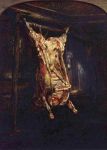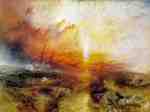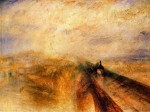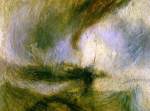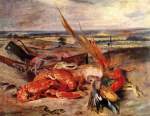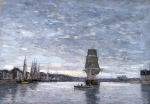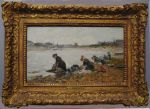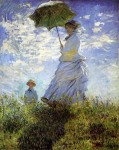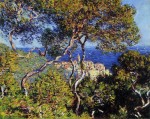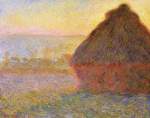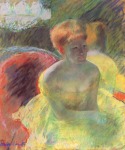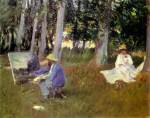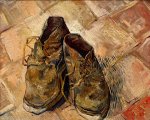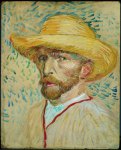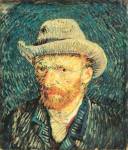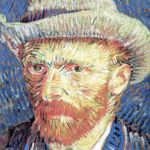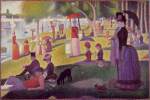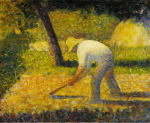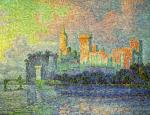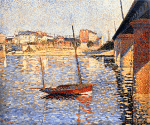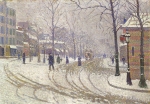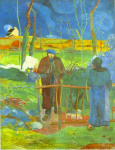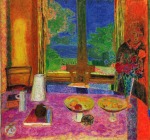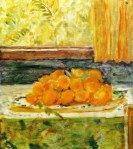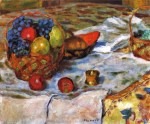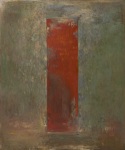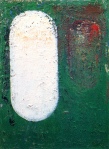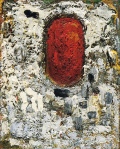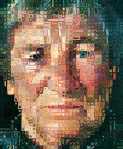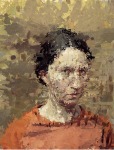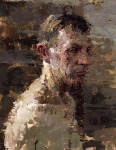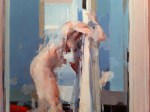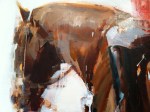Chuck Close: Notes to My Younger Self
April 12, 2012 § Leave a comment
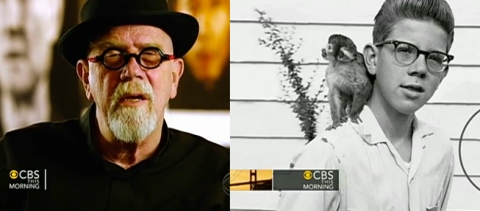 Courtesy of CBS News
Courtesy of CBS News
“This is a note to myself at age 14:
I was in the eighth grade and was told not to even think about going to college. I couldn’t add or subtract, never could memorize multiplication tables, was advised against taking algebra, geometry, physics, chemistry. Since I was good with my hands I was advised to aim for trade school, perhaps body and fender work.
Never let anyone define what you are capable of by using parameters that don’t apply to you. I applied to a junior college in my hometown with open enrollment, got in and embarked on a career in the visual arts. Virtually everything I’ve done is influenced by my learning disabilities. I think I was driven to paint portraits to commit images of friends and family to memory. I have face blindness, and once a face is flattened out I can remember it much better.
Inspiration is for amateurs. The rest of us just show up and get to work. Every great idea I’ve ever had grew out of work itself. Sign on to a process and see where it takes you. You don’t have to invent the wheel every day. Today you’ll do what you did yesterday, tomorrow you’ll do what you did today. Eventually you’ll get somewhere. No one gets anywhere without help. Mentors, including your parents, can make you feel special even when you’re failing in other areas. Everyone needs to feel special.
My father died when I was eleven and that was the tragedy of my life, a horrible thing to happen when you’re so young. Oddly enough, there was a gift in this tragedy. I learned very early in life that the absolute worst thing can happen to you and you will get past it and you will be happy again. Losing my father at a tender age was extremely important in being able to accept what happened to me later when I became a quadriplegic.
If you’re overwhelmed by the size of a problem, break it down into many bite-size pieces. Quadriplegics don’t envy the able-bodied, we envy paraplegics. We think they’ve got a much easier row to hoe. There’s always someone worse off than you. I’m confident that no artist has more pleasure, day in and day out from what he or she does, than I do.”
“Le Petit Tache:” Divisionist Technique and Optical Mixing
February 7, 2011 § 5 Comments
Impressionist & Divisionist Technique
Landscape was the genre in which divisionist techniques were born and most developed, beginning with Turner and Delacroix who began to exploit the observations and theories of Chevreul and Goethe on the optical mixing of color by painting with distinct touches of unblended paint, side by side, allowing the color to “mix” in the eye.
The work of Turner and Delacroix, as well as that of Goethe and Chevreul in the early 19th century, had a profound impact on Monet, Pissaro, Sisley, Renoir, and others of the group that later became known as “Impressionists.” As students, their academic training taught them to shade forms off into brown and black in the shadows. These young painters could see that shadows were actually colored, and that, in fact, the whole visual field was shimmering with color sensation. Local color, the notion that things have a distinct, unchanging color, was shattered in the new awareness of how color, light, and context influence the perception of color. Their dissatisfaction with the limitations of academic teaching led them out of the studios into nature to work out a new way of painting based on the broken touch.
The technique itself was not new but its application was. The Impressionists built on an academic method widely taught in the ateliers of Paris known as the “petit-tache,” or little touch, a technique of applying unblended touches of color which later would be blended with a soft, badger-hair brush to disguise the effect and create a smoother, more refined look. The Impressionists were reviled, not only for their subject matter, which confronted every day realities of contemporary life as opposed to the classicizing conceits of academic painting, but also for exhibiting finished works with this broken touch, a direct confrontation to the tastes of the day. Seurat, and Signac developed the divisionist technique into the style known as Pointillism, based on their growing interest in the scientific application of color physics to painting.
Painters like Cezanne, Van Gogh, Gauguin, Serusier, Bonnard, and many others, were less interested in the science of color than they were in its emotional impact, and pushed color saturation into new subjective realms, developing very personal styles that derived from the use of the “petit-tache.”
- Rembrandt
- Frans Hals
- Frans Hals
- Turner
- Turner
- Turner
- Delacroix
- Boudin
- Boudin
- Monet
- Monet
- Monet
- Monet
- Cassatt
- John Singer Sargent
- Van Gogh
- Van Gogh
- Van Gogh
- Van Gogh
- Van Gogh
- Seurat
- Seurat (detail)
- Seurat
- Seurat
- Signac
- Signac
- Signac
- Signac
- Gauguin
- Serusier
- Bonnard
- Bonnard
- Bonnard
- Jake Berthot
- Jake Berthot
- Jake Berthot
- Chuck Close
- Ann Gale
- Ann Gale
- Alex Kanevsky
- Alex Kanevsky
- Alex Kanevsky
